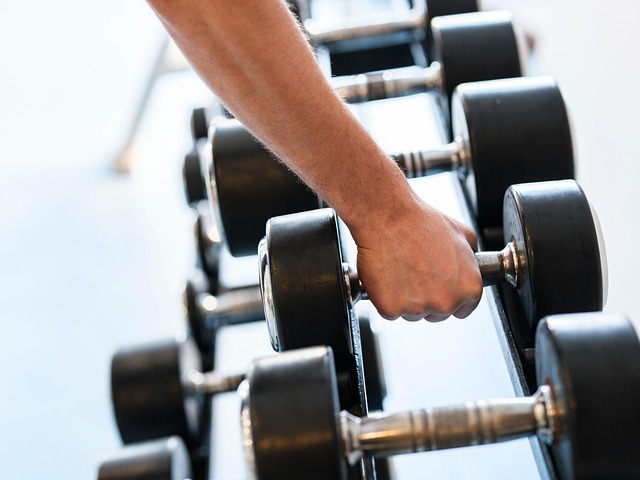When it comes to building muscle, many factors come into play—diet, exercise, recovery, and consistency are often cited as the pillars of success. However, one critical factor that is often overlooked or underestimated is genetics. While hard work and dedication are essential, your genetic makeup plays a significant role in determining your muscle-building potential, how quickly you gain strength, and even how your body responds to training. In this article, we’ll explore the influence of genetics on muscle growth, its limitations, and how you can optimize your efforts despite genetic predispositions.
Understanding the Role of Genetics
Genetics refers to the inherited traits passed down from your parents, which influence everything from your height and bone structure to your metabolism and muscle fiber composition. These genetic factors can either enhance or limit your ability to build muscle. While everyone has the potential to improve their physique through resistance training, genetics largely dictate the upper limits of your muscle-building capabilities.
Here are some key genetic factors that influence muscle growth:
1. Muscle Fiber Composition
Muscle fibers are categorized into two main types:
- Type I (Slow-Twitch) Fibers: These fibers are designed for endurance activities like long-distance running. They contract slowly and are resistant to fatigue but don’t grow as large.
- Type II (Fast-Twitch) Fibers: These fibers are responsible for explosive movements like sprinting or heavy lifting. They contract quickly, generate more force, and have a greater capacity for hypertrophy (muscle growth).
Your genetic predisposition determines the ratio of Type I to Type II fibers in your muscles. Individuals with a higher proportion of Type II fibers tend to excel in strength and power sports and may find it easier to build muscle. Conversely, those with more Type I fibers may struggle to achieve the same level of muscle mass but may excel in endurance activities.
2. Hormone Levels
Hormones like testosterone, growth hormone, and insulin-like growth factor-1 (IGF-1) play a crucial role in muscle development. Testosterone, in particular, is a key driver of muscle protein synthesis and strength gains. Men typically have higher testosterone levels than women, which explains why men generally build muscle more easily. However, even among men, natural variations in hormone levels can influence muscle-building potential.
3. Bone Structure and Limb Length
Your skeletal frame and limb length also impact muscle growth. People with larger bone structures and shorter limbs tend to appear more muscular because their muscles have less distance to span, creating a fuller, denser look. On the other hand, individuals with longer limbs may find it harder to achieve the same aesthetic appearance, even if they have similar muscle mass.
4. Metabolism and Fat Distribution
Genetics influence how efficiently your body processes nutrients and stores fat. Some people naturally have faster metabolisms, allowing them to maintain lower body fat levels while gaining muscle. Others may need to be more diligent about their diet to avoid excessive fat gain during bulking phases. Additionally, where your body tends to store fat (e.g., abdomen vs. thighs) can affect your overall muscle definition.
5. Recovery Capacity
How quickly your body recovers from workouts is another genetically influenced factor. Some individuals recover faster, enabling them to train more frequently and with greater intensity. Others may require longer rest periods between sessions to avoid overtraining and injury.
Can You Overcome Genetic Limitations?
While genetics set the stage for your muscle-building potential, they don’t define your entire journey. Even if you’re not genetically predisposed to building massive muscles, there are several ways to maximize your results:
1. Tailor Your Training Program
Understand your body’s strengths and weaknesses and design a workout plan that works with your genetic predispositions. For example:
- If you have more Type I fibers, focus on higher-rep, moderate-intensity workouts to build endurance and lean muscle.
- If you have more Type II fibers, prioritize heavy lifting and explosive movements to stimulate hypertrophy.
2. Optimize Nutrition
Diet plays a pivotal role in muscle growth, regardless of genetics. Ensure you’re consuming enough protein (about 1.6-2.2 grams per kilogram of body weight) to support muscle repair and growth. Additionally, balance your calorie intake to match your goals—whether you’re bulking or cutting.
3. Prioritize Recovery
Since recovery capacity varies by individual, pay attention to your body’s signals. Get adequate sleep (7-9 hours per night), manage stress, and incorporate active recovery days to allow your muscles to repair and grow.
4. Be Consistent
Consistency is the ultimate equalizer. Regardless of your genetic starting point, sticking to a well-structured training and nutrition plan over time will yield noticeable improvements. Progress may be slower for some, but persistence pays off.
5. Focus on What You Can Control
Instead of fixating on what you can’t change, celebrate the progress you make. Whether it’s improving your strength, increasing endurance, or enhancing your overall health, every achievement is worth recognizing.
Realistic Expectations Based on Genetics
It’s important to set realistic goals based on your genetic potential. Elite bodybuilders and athletes often possess exceptional genetics that allow them to build extraordinary physiques. For the average person, achieving such levels of muscularity may not be feasible, but that doesn’t diminish the value of striving for personal improvement.
Rather than comparing yourself to others, focus on becoming the best version of yourself. Celebrate milestones like lifting heavier weights, achieving a leaner physique, or simply feeling stronger and healthier. Remember, fitness is a lifelong journey, not a destination.
